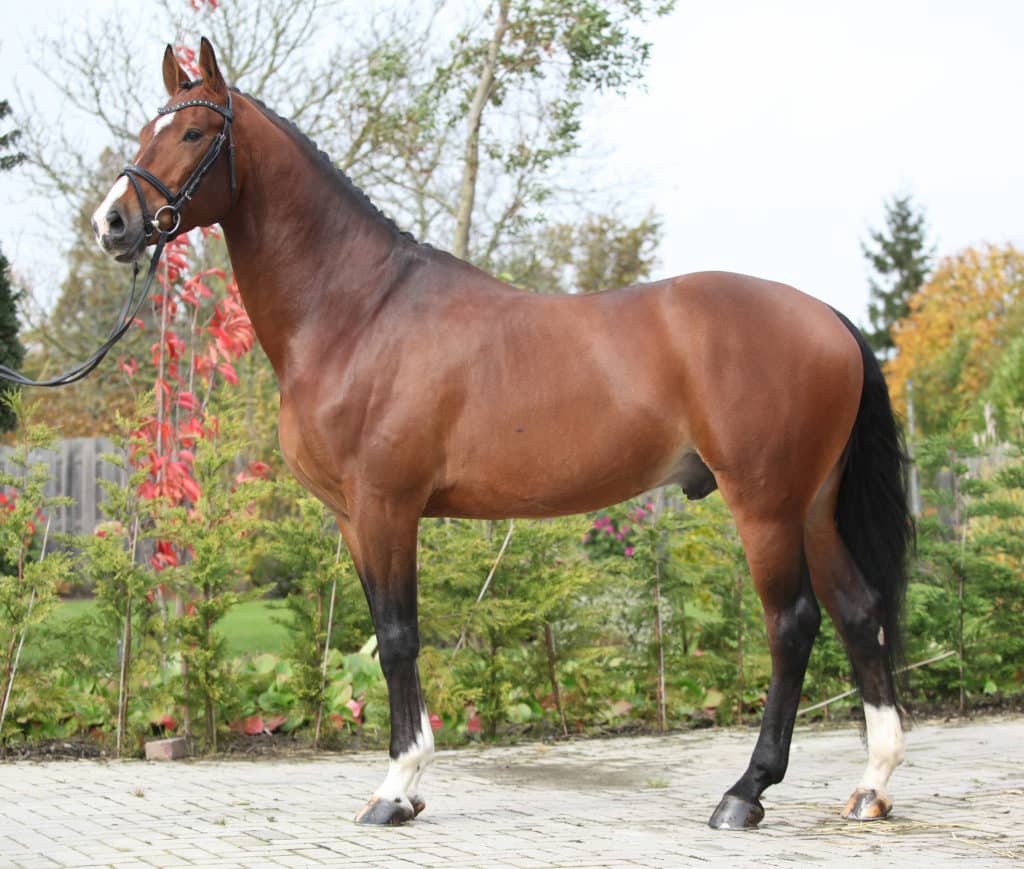Uncategorised
Dutch Warmblood Horse: Origins, Care & Key Facts
The Dutch Warmblood is a middleweight sports horse that’s well-known in the competitive sphere. Champions in show jumping, dressage and even carriage driving, this is a highly versatile and athletic breed with an even temperament and kind nature.
Vital Stats
Weight: 544 – 657kgs
Height: 16 – 17hh
Life Expectancy: 20 – 25 years
Best For: Dressage, jumping and driving
Origin: The Netherlands
Dutch Warmblood History
The origins of the Dutch Warmblood horse can be traced back to the Netherlands during World War II. The breed was created as a result of crossing the Gelderlander, a medium-sized carriage horse with the Groningen, a larger, heavier horse used for agricultural work.
Post-war, cars and tractors replaced horses for transport and farm work and breeding became much more focused on creating riding horses for pleasure and sport. Many wanted a versatile, allrounder that was strong enough to pull carriages when needed but would also look smart and be a pleasure to ride.
Initially a heavier breed, the Dutch Warmblood has seen many refinements over the years and breeds such as Thoroughbreds, Hackneys and Cleveland Bays were added to create a lighter, athletic horse that would excel in a range of equestrian sports. Later, Trakehners, Selle Francais, Oldenburgs and Hanoverians were also added to improve conformation and temperament.
Still an adaptable breed today, the Dutch Warmblood is now divided into three breeding directions based on purpose: harness type, Gelders type and riding type (divided into dressage and jumper types).
Size
The Dutch Warmblood’s height is usually over 16 hands with the average standing at around 16.2hh. There’s no upper limit on height. Classed a middleweight horse, the breed tends to weigh between 544 – 657kgs.
Appearance
At first glance, you can see that the Dutch Warmblood is a powerful and elegant horse. The head is refined and elegant which leads to a muscular arched neck; their withers are prominent; the topline is smooth and their shoulders are long and sloping which gives them a wonderfully expressive movement; the hindquarters are powerful, and the legs are long with hock joints low to the ground.
Most Dutch Warmbloods are solid colours with black, bay, grey and chestnut with or without white markings being the most common. Tobiano colours are also possible.
Diet & Nutrition
Like all horses, Dutch Warmbloods need a healthy balance of carbohydrates, proteins, minerals, vitamins and fresh water. They should be provided with a good mix of forage such as fresh grass, quality hay and grains if required. It’s recommended to speak to your vet or a qualified equine nutritionist with breed experience to provide diet recommendations.
Unique Characteristics
What sets the Dutch Warmblood apart from other breeds is their incredible athleticism. Some of the top competition horses in the entire world are Dutch Warmbloods and you may recognise Charlotte Dujardin’s Valegro as being one. Winner of the individual gold at both the 2012 and 2016 Olympics, team gold in 2012 and double World Champion in Dressage, Valegro is easily one of the most decorated dressage horses in the world.
Moorlands Totilas was another notable Dutch Warmblood and was considered to be one of the best dressage horses in the world. Amazingly, he and Edward Gal were the first ever to score above 90 in a dressage competition.
Temperament & Behaviour
Dutch Warmbloods have been carefully bred to have a gentle, kind temperament and be generally easy to work with. That being said, this breed is no kick-a-long plod, they’re also highly intelligent and are known to be in tune with their rider, making them a pleasure to ride and train.
Health Issues
There are generally few health issues to affect the Dutch Warmblood horse which is due to the scrupulous breeding requirements that disqualify breeding mares and stallions that don’t meet the breed standard. Prior the being admitted to the studbook, horses go through a strict assessment where they’re also radiographed for spavins and navicular changes.
The only health problems that tend to impact the breed are arthritis and joint problems which usually affects them later on in life and are commonly seen in competition and sports horses.
Grooming
Dutch Warmbloods benefit from regular grooming to keep their skin and coat healthy. Before riding, dirt and debris should be removed from areas where tack will sit at the very least and all over grooming should be carried out regularly to distribute oils across the body. Hooves should be picked out daily and a once-over should be carried out once per day to check for injuries.
Lifespan
The average lifespan for a Dutch Warmblood is between 20 and 25 years, but this will depend on several factors including overall health, management and environment.
Why Choose a Dutch Warmblood Horse?
Whether you’re a pleasure rider looking for a fun allrounder to do a bit of everything on or a serious competitor, the Dutch Warmblood is a fantastic sort. Boasting powerful legs to clear impressive fences and carry out even the most complex of lateral movements, but with a kind and reliable personality that makes them suitable for hacking and fun rides, the Dutch Warmblood can turn its hoof to just about anything.
Now you know all there is to know about the Dutch Warmblood! Want to learn about more amazing horse breeds? Find out about the Arabian, next.


